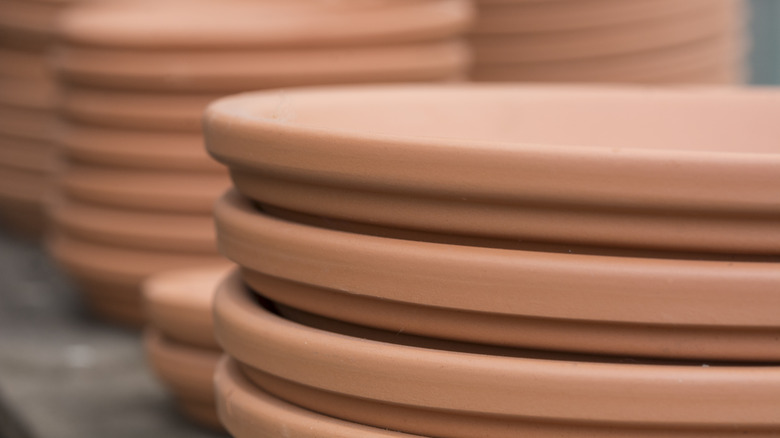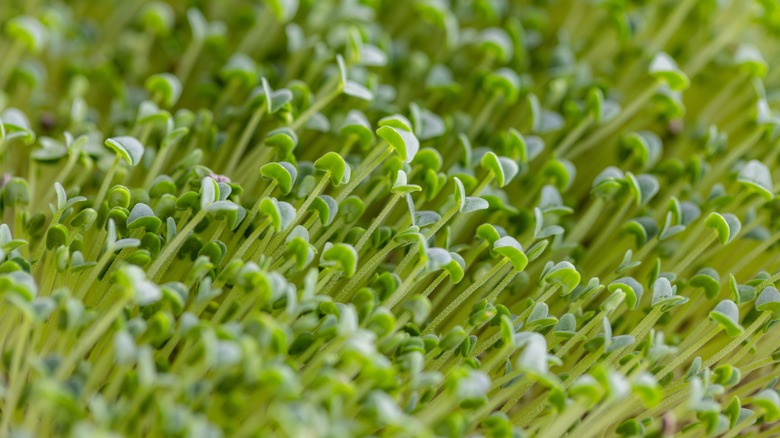Grab An Old Terra Cotta Plant Saucer & Watch What You Can Grow
Terra cotta is a versatile and porous fired clay that has been around and used for at least 5,000 years. You probably garden with terra cotta pots, as they're economical, and many plants seem to love them, but over the centuries, terra cotta has been used to decorate, build houses, and create statues. One of the most convenient things about the pot variety is they come with a matching terra cotta saucer for watering — or to catch excess water. The downside is that terra cotta pots can break easily, so what do you do with the saucer that just lost its job? One thing you can do is use it to grow chia seed plants.
That's right, the chia pets available in every shape, from hedgehogs and llamas to Scooby Doo, are made of terra cotta. Why? Because its porous nature allows for airflow and creates the perfect environment for these seeds to thrive. The great thing is that you don't need anything fancy from the store. All you need is an old terra cotta plant saucer and some chia (Salvia hispanica) to grow your own beneficial microgreens. These plants contain omega-3s, fiber, antioxidants, and protein, so they're not only easy to grow but also nutritious.
Growing chia and other microgreens
Start by cleaning your terra cotta plant saucer so your seeds have a fresh and sanitary surface to grow on. Soak it in clean water before adding the chia. Next, pour a single layer of seeds into the moist saucer and mist completely with water. After about an hour, mist them again and cover the saucer with plastic wrap, creating a mini greenhouse. You could also use a pot lid if you have one that is the right size.
Set your seeds in a warm place and mist them several times daily, but keep them out of direct sunlight. Wait at least two days — or up to three — and the chia should start to sprout. Once you see the little green plants begin to pop out, remove the plastic or lid, allowing the air to flow over your seeds and little plants. Once the chia reaches an inch or two, it's time to harvest. Eat them as-is, add them to salads and drinks, or top your sandwich with the sprouts — whatever you like!
Chia seeds do so well directly on terra cotta without the help of another growing medium because they produce mucilage (a gelatinous substance) around each seed, keeping in moisture and other nutrients that create a positive growth environment. If you want variety in your sprouting, some similar microgreens even a novice can grow on terra cotta saucers include flax, basil, cress, and arugula.

